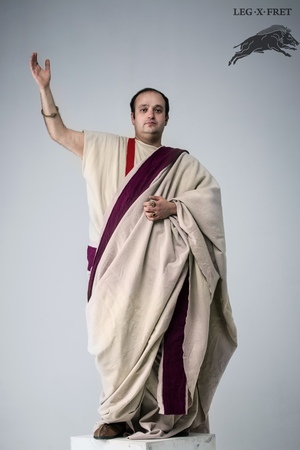Patricians
A patrician (Latin: patricius, from pater - father) was a person belonging to one of the original Roman families, which formed the ruling class and controlled public lands.
In Ancient Rome, patricians were initially all native citizens who were part of the tribal community, forming the Roman people (Populus Romanus Quiritium) and standing in opposition to the plebeians. Later, after noble patriarchal families were distinguished from the tribes, only the hereditary landed aristocracy, whose ancestors originally constituted the royal senate, were considered patricians. Belonging to this aristocracy could be acquired by birthright, through adoption, or by reward. However, patrician privileges could be lost due to limitations on rights.
From the late 6th century BC, patricians became the ruling class—a distinct estate of the Roman Republic. The economic basis of their power was the exclusive right to use public land (ager publicus).
After plebeians were included as part of the Roman people and were equalized in rights with patricians in the 3rd century BC, the upper echelons of the patriciate and plebeians merged to form the nobility.
During the early Imperial period, a new patriciate emerged, forming the privileged part of the senatorial class. This new patriciate included individuals promoted by the emperor from Italy and the provinces. By this time, the old patrician families had mostly died out, and the class was replenished with newcomers, an "aristocracy by decree," who were elevated to patrician status as a reward for their service to the emperor. It is worth noting that Julius Caesar was the first to initiate this practice.
Related topics
Men in Ancient Rome, Roman Republic, Royal Rome, Roman Empire, Plebeians, Gaius Julius Caesar



